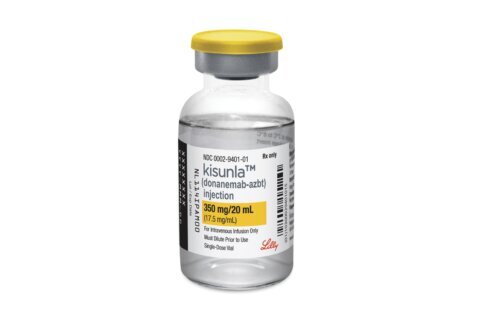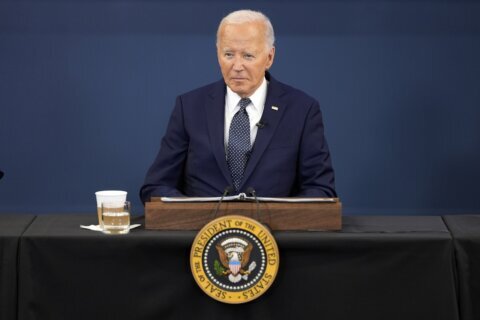U.S. investors may have enjoyed a prolonged bull market fueled by large-cap tech stock growth over the last decade, but this wasn’t always the case. Older investors may remember the “Lost Decade” of 1999 to 2009 where U.S. stocks stagnated for a prolonged period.
During this time, U.S. market returns as measured by the Vanguard Total Stock Market Index Fund (ticker: VTSMX) returned an annualized 1.7%, dragged down by three consecutive years of losses following the dot-com bubble and then a 37% loss in 2008, at the height of the Great Recession.
[Sign up for stock news with our Invested newsletter.]
In contrast, emerging markets, as measured by the Vanguard Emerging Markets Stock Index Fund (VEIEX) delivered a 13.7% annualized return. While the narrative flipped again in the ensuing decade, the precedent for emerging market outperformance was established.
“The term ’emerging markets’ refers to countries that are in the middle stage of their development, only recently industrialized, or just opened their markets up to foreign investment,” says Brendan Ahern, chief investment officer at KraneShares. “The largest examples include China, India and Brazil, with some other examples being Turkey, Thailand and Indonesia.”
Some of these countries currently play a crucial role in the global economy. For example, China dominated 18.2% of global gross domestic product, or GDP, in 2022. In comparison, the U.S. came in second at 12.4%, while India clocked in third at 8.7%.
Despite this, the market-cap weighted nature of most global stock indexes means that emerging market countries are often under-represented relative to their GDP. Case in point, the popular Vanguard Total World Stock ETF (VT) currently only holds a 10% allocation to emerging market equities.
“We believe emerging market diversification is more important than ever as U.S. and developed market stocks are currently experiencing heightened volatility and lower returns compared to the past thanks to rising rates,” Ahern says. “For example, China has not followed global central banks in raising rates and has kept interest rates stable over the past year.”
Beyond diversification benefits, investors can also target emerging markets for greater expected returns, at the cost of higher risk. “As emerging countries develop over time, growth opportunities can emerge as their expanding population and income increases demand for goods and services,” says Emily Cozad, portfolio manager, research analyst and investment funds specialist at Buckingham Advisors.
An easy way of investing in emerging markets is via an exchange-traded fund, or ETF, that either passively tracks an emerging market benchmark index, or actively selects a portfolio of emerging market stocks. Both methods can provide investors with transparent and accessible emerging market exposure.
“An ETF is a great way to invest in emerging markets without exposing the investor to the volatility and risks that come with individual stocks,” Cozad says. “Oftentimes, emerging markets have less stringent reporting requirements for publicly traded companies, which may make it more difficult for an investor to do thorough research and due diligence.”
Here’s a look at seven ETFs investors can buy to invest in different emerging markets today:
| ETF | Expense ratio |
| Vanguard FTSE Emerging Markets ETF (VWO) | 0.08% |
| iShares Core MSCI Emerging Markets ETF (IEMG) | 0.09% |
| KraneShares S&P Pan Asia Dividend Aristocrats Index ETF (KDIV) | 0.69% |
| Franklin FTSE Taiwan ETF (FLTW) | 0.19% |
| Franklin FTSE India ETF (FLIN) | 0.19% |
| VanEck Vietnam ETF (VNM) | 0.66% |
| The Emerging Markets Internet & Ecommerce ETF (EMQQ) | 0.86% |
Vanguard FTSE Emerging Markets ETF (VWO)
“In Vanguard’s April 2023 Market Perspectives report, our emerging markets projection for a 10- year annualized nominal return showed 6.3% to 8.3%,” says Cassandra Rupp, senior financial advisor at Vanguard. “This projection is higher than the projection for U.S. equities at 4.4% to 6.4%, further emphasizing the importance of having international exposure in a long-term balanced portfolio.”
A low-cost ETF from Vanguard that provides exposure to a broadly diversified portfolio of 5,700 emerging market stocks is VWO, which tracks the FTSE Emerging Markets All Cap China A Inclusion Index. Due to its market-cap weighted nature, Chinese equities currently make up 35% of VWO, followed by Taiwanese and Indian equities at 18% and 16%, respectively. The ETF charges a 0.08% expense ratio.
iShares Core MSCI Emerging Markets ETF (IEMG)
A popular tax-loss harvesting partner for VWO is IEMG due to a combination of similar geographic exposure, underlying holdings and historical returns. Because IEMG tracks the MSCI Emerging Markets Investable Market Index, investors could potentially use it to tax-loss harvest VWO without running afoul of the IRS’ wash sale rule. The ETF also comes in fairly cheap at a 0.09% expense ratio.
In terms of geographical representation, Chinese stocks make up around 28% of IEMG, followed by Taiwanese and Indian stocks at approximately 15% each. Notable in IEMG is a 12% allocation to Korean equities which are missing from VWO. This is because the MSCI index used by IEMG classifies Korea as emerging, while the FTSE index used by VWO classifies Korea as developed.
[READ: 5 Great Fixed-Income Funds to Buy for 2023]
KraneShares S&P Pan Asia Dividend Aristocrats Index ETF (KDIV)
“We believe it is also important for investors to understand that not all emerging markets are created equal,” Ahern says. “In particular, China is unique within emerging markets due to its size as second-largest economy in the world, and its performance characteristics.” For a spin on investing in Chinese equities, investors can consider KDIV, which tracks the S&P Pan Asia Dividend Aristocrats Index.
KDIV selects a portfolio of equities from Pan-Asia countries like China, Japan, and Australia that have paid and increased their dividends over a sustained period. “Specifically, KDIV offers exposure to companies based in Asia that have increased their dividends every year for the past seven years,” Ahern says. The ETF charges a 0.69% expense ratio.
Franklin FTSE Taiwan ETF (FLTW)
An emerging market powerhouse in recent years has been Taiwan, thanks to the strength of the nation’s semiconductor industry and strong overseas demand. “Taiwan’s economy is export-driven and closely tied to the cyclical fortunes of semiconductor companies,” says Dina Ting, senior vice president and head of global index portfolio management at Franklin Templeton.
Investors looking for passively managed, pure-play exposure to large and mid-cap Taiwanese equities can consider FLTW, which tracks the FTSE Taiwan Capped Index. Currently, this ETF sits at around $133 million in assets under management, or AUM, and charges a reasonable 0.19% expense ratio. As expected, FLTW is heavily dominated by the technology sector at around 57% of its holdings.
Franklin FTSE India ETF (FLIN)
“India poses interesting growth opportunities for investors as the country is positioned to benefit from favorable demographics, rising incomes and a growing middle class,” Ting says. “India is currently Asia’s third-largest economy, and its population growth is projected to soon outpace that of China.” Investors looking to capitalize on long-term growth trends in India can do so with FLIN.
This ETF provides passively managed exposure to large and mid-cap Indian equities by tracking the FTSE India Capped Index. Like FLTW, FLIN also charges a 0.19% expense ratio. However, its portfolio is dominated by financial sector companies at 21%, which is characteristic of the Indian economy. “Access to banking and financial services continues to expand in India,” Ting says.
VanEck Vietnam ETF (VNM)
“We think Vietnam offers compelling opportunities among frontier economies, and many investors may not have exposure,” says William Sokol, vice president and director of product management at VanEck. “The economy has benefited from favorable demographics, diversification by global companies away from China, and policymakers’ focus on structural reforms and new trade agreements.”
For transparent Vietnamese equity exposure, VanEck offers VNM, which holds 42 stocks tracked by the MarketVector Vietnam Local Index for a 0.66% expense ratio. “A potential upgrade of Vietnamese equities by global index providers from ‘frontier markets’ to ’emerging markets’ status could result in a significant increase in foreign investment flows,” Sokol says.
The Emerging Markets Internet & Ecommerce ETF (EMQQ)
“Emerging markets are interesting because countries with a lower income base have an opportunity to achieve much faster growth than developed peers,” says Scott Krase, wealth manager at Connor & Gallagher OneSource. “A thematic ETF like EMQQ allows investors to target technology companies that are even more growth orientated and play into large themes.”
EMQQ targets the growth in online consumption by countries like India, China, Brazil and Turkey. The rising middle class in these countries is expected to fuel demand for services like online retail, search engines, social networking, gaming and electronic payments, which EMQQ’s portfolio is positioned to benefit from. The ETF charges a 0.86% expense ratio.
More from U.S. News
Top 5 Stocks to Watch This Week
7 Space Stocks and ETFs to Watch
How This 25-Year-Old Makes $500k a Year With His Newsletter Business
7 Best Emerging-Market ETFs originally appeared on usnews.com
Update 05/09/23: This story was previously published at an earlier date and has been updated with new information.







